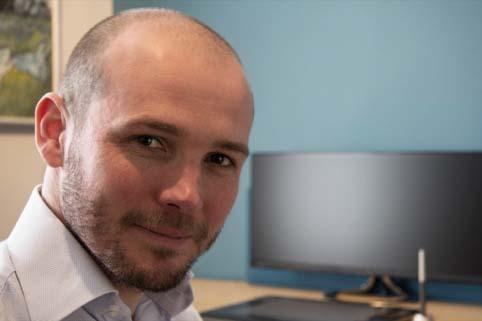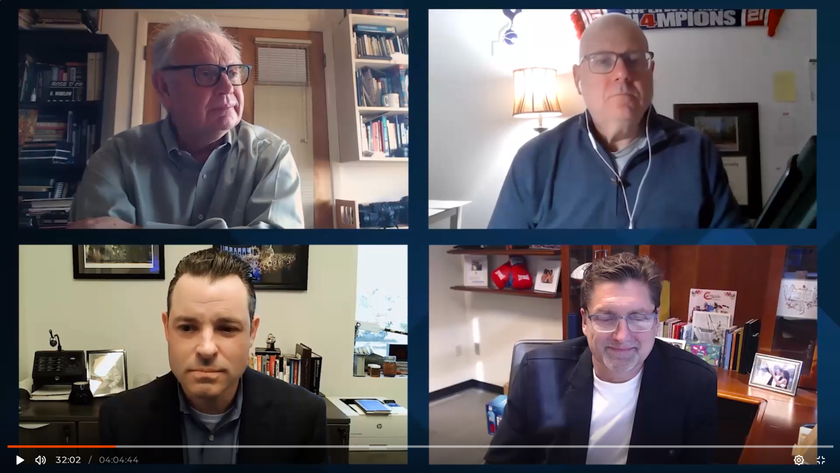Detailing His Own Persistence of Vision
For any storyteller, there’s an immense benefit to serving on both sides of the lens.
Sgt. Matthew Callahan is one of those storytellers, a Marine who was deployed in Afghanistan and then returned as a combat correspondent with the Public Affairs office for the Department of Defense. For his work covering military operations in the field, Callahan was named both 2017 Military Photographer and Military Videographer of the Year, the first time both awards have been awarded to the same individual.
After breaking his leg during his deployment to Afghanistan in 2010 and recovering alongside other members of his Wounded Warrior detachment, Callahan had a camera placed in his hands. Callahan, who spoke with Susan Ashworth of Government Video about his experience, will give a Government Video Expo keynote discussion titled “Persistence of Vision” on Wednesday, Nov. 28 at 3 p.m. in the Government Video Theater.
GV:Tell us a little about your background as a service member and as a photographer/videographer? Were you taking photographs before you entered the military?
Sgt. Matthew Callahan: I enlisted in the Marine Corps as infantry member and had my first deployment to Afghanistan in 2010 where I broke my leg in Helmand Province. I snapped it jumping a wadi, or canal, while on patrol in 2010. I was the first of many people who hurt themselves [in that same location].
I was transferred to the Wounded Warrior detachment. It took a year to get recovered and in that time I started to do on-the-job training with Public Affairs. I had no experience with photography at that point. I learned the craft when they put a camera in my hands.
I did not return to Afghanistan after my injury, but since I became a photographer [and] videographer, I travelled to several countries. Most notably, in 2017 I deployed on a Marine Expeditionary Unit and spent five months in Syria with an artillery battery as they supported Combined Joint Task Force Operation Inherent Resolve in the destruction of ISIS. Specifically, we supported the Syrian Democratic Force's taking of Raqqa, Syria, ISIS’ de facto capital.
GV:What do you think it is about your still images and videos that resonate with viewers?
Callahan: I think when you think about any kind of profession, there’s the wave tops — people’s perception of that profession. But when you dig beyond that and you find, no matter what you’re doing, there are these little idiosyncrasies, this little bit of culture you take from everywhere all around you.
What I’ve tried to do with my images for the Marine Corps is to take those little things you take for granted: the 5 pounds of crap in your pocket or you sleeping on a dirt floor. The things that people generally don’t think about.
I’ve been fortunate to be able to shed a light on the smaller moments. There’s a place for the big rah-rah moments as well. But there’s a need for the human moments too.
GV:What are some of the challenges you faced in the field?
Callahan: Let me talk about what worked well first. What’s easy in a garrison environment is that you have more control over what you’re doing. You can go back and shoot it again. [In comparison] when you’re in a deployment, what you have is what you’ve got, so you better be ready. You’ve got to be able to carry 40 to 50 pounds of gear and a tripod and a weapon and other things. That was challenging.
It’s about learning along the way and adapting to the situation you’re in. You do your job, maintain the gear, make sure it’s clean. That’s all you have with you.
GV:What was your reaction to being named the first service member awarded with both Military Photographer and Videographer of the Year honors?
Callahan: It was really exciting and humbling to win both. And I think on a bigger scale it’s almost a proof of concept in a lot of ways. [Winning both the photography and videography award] illustrates the possibility that not only can you dip into multiple disciplines but you can excel at them and do them simultaneously.
GV:Is there a favorite photo or video segment that you feel tells the story just the way you wanted to?
Callahan: When it comes to stills, some of my favorites images are the ones we talked about: those quiet, silly, stupid moments that you take for granted or are asleep for; the day-to-day or the in-between. That resonates with me and also captures what these folks were going through. It lets people see what they are seeing. It takes you out of the world of two dimensions and into the realm of three dimensions. It humanizes them.
GV:What kind of camera do you use in your work?
Callahan: I use a DSLR for both still and video work. The drone I used was a DJI Phantom 4 Pro Plus on deployment. It was one of two systems used for a counter-UAS system we had.
GV:What do you hope attendees will walk away with from your GV Expo session?
Callahan: One theme has to do with telling stories and making content. The best thing you can do is to consider the perspective of someone who has no idea of what story you are trying to tell. Try to step into a stranger’s shoes who has no experience with [the situation you’re photographing].
The other is learning the technical stuff, the storytelling stuff, the billions of elements that come into telling a story. It’s incremental for anyone who has had any success: there’s no single workshop, no single person to teach you. Instead it’s keeping your mind open and taking little, tiny bits of info into your toolbox.
Get the TV Tech Newsletter
The professional video industry's #1 source for news, trends and product and tech information. Sign up below.
Susan Ashworth is the former editor of TV Technology. In addition to her work covering the broadcast television industry, she has served as editor of two housing finance magazines and written about topics as varied as education, radio, chess, music and sports. Outside of her life as a writer, she recently served as president of a local nonprofit organization supporting girls in baseball.













